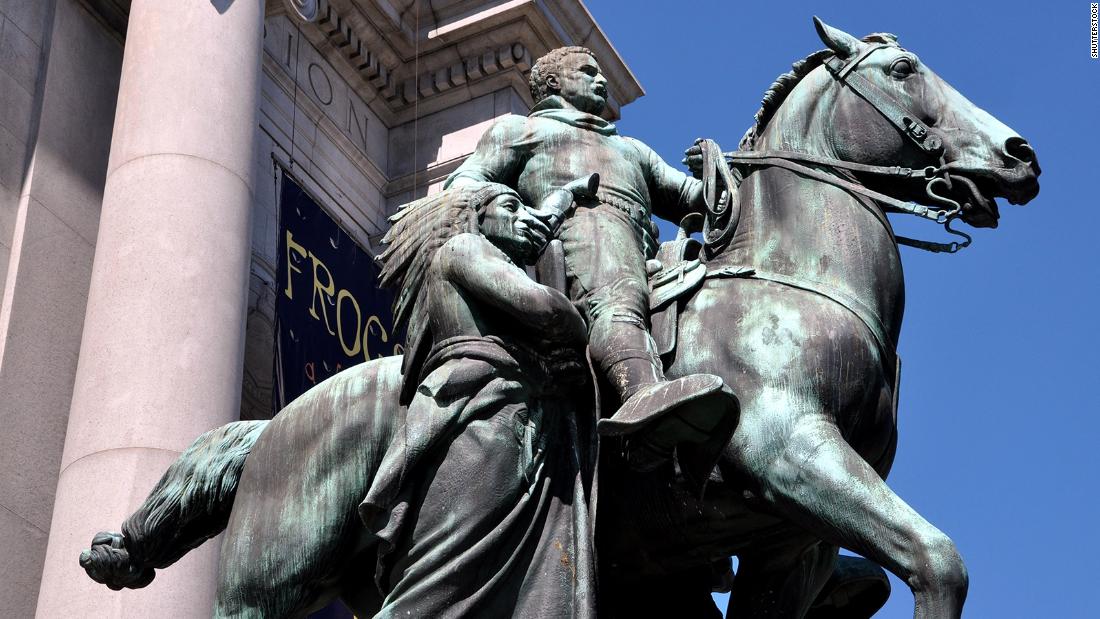[ad_1]
Perhaps now, as museums like AMNH put to rest the tired disclaimer that such objects are merely expressions of the ideas of an earlier era, they can take the opportunity to confront their complex inheritances and rethink their role in the contemporary world.
While Futter’s decision chimes with the efforts of cultural institutions across the nation to respond to — or inoculate themselves from — the demands of the movement for racial justice roiling the country and the world, it should also be seen in the context of ongoing campaigns for museums to break from their colonial tradition and newly imagine how they present their collections and engage their publics.
There was distress, dispossession and war throughout the Dutch colony that year but, until the renovation, few museum visitors were likely to have seen past the upright yet submissive Lenape men in their loin cloths and feathers, the laboring Lenape women bare-breasted in the background, the Indian wampum, tobacco, clubs and canoes lopsidedly ranged against the fully dressed Dutch with their guns, brick buildings, ships and orderly commerce.
The diorama now includes a statement from Molly Miller (or Wasalaangweew) of the Stockbridge-Munsee Mohican Nation of Wisconsin: “The early years of colonization caused much intergenerational trauma and the hiding of our culture. We now celebrate over 40 years of cultural reawakening and the 13th year of Lenape-Munsee language revitalization.” And as I stood there last fall, a teacher from a New York City public middle school read aloud to her attentive group a label in which the museum acknowledges its location on Lenape lands and describes its determination to assess its colonial history and “add a diversity of voices and perspectives to the Museum’s displays.”
At which point, one of the students observing the diorama asked the inescapable question: “So why don’t they just take it down?”
But Boas — along with other anthropologists and archaeologists of this period — was deeply preoccupied by the fear that Native people, their cultures, and their languages, were disappearing in the US and around the world under the onrush of modernity (and wanted to preserve as much as they could of that heritage) and set himself the task of salvaging this vanishing world, as he saw it.
As a result, the anthropologist Lee D. Baker has shown, progressive white social scientists came to value above all a narrow and exclusionary conception of what a “real Indian” could be.
We should celebrate when racist statues fall and we should encourage New York City’s museums to seize this moment to move beyond their declarations of support for racial justice. Those statements are hollow unless matched with a proactive response to calls for new visions of what a 21st century museum can be.
They are pressing for the genuine diversification of curatorial, administrative and other staff, and for the development of inclusive and collaborative models of archaeological, cultural and scientific research and training. And, not least, they want to participate in the reimagining of displays and outreach through collective conversations that allow for the decentering of inherited Eurocentric narratives.
Museums are among our great institutions of public learning: the city and state have an obligation to support their renewal — both financially and politically. To remain relevant, museum leadership has an equal responsibility to accept the challenge of this unprecedented moment of democratic and cultural opportunity.
[ad_2]
Source link


